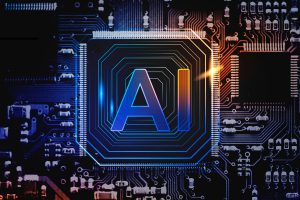How Microsoft Plans to Use Nuclear Energy for AI
Introduction
Hello, I’m Fred Wilson, an AI researcher. I’m here to tell you how Microsoft is planning to use nuclear energy for its AI projects.
AI is a powerful tool that can help us solve some of the world’s most pressing problems. However, AI also consumes a lot of energy. To meet this demand, we need a clean, reliable, and affordable source of electricity. That’s where nuclear energy comes in.
Why We Need Nuclear Energy for AI
Microsoft is one of the leading companies in the fields of technology, energy, and artificial intelligence (AI). We have partnered with OpenAI, a research organization dedicated to creating and ensuring the safe use of artificial general intelligence (AGI). AGI is AI that can perform any intellectual task that humans can.
Our AI ambitions require a lot of energy, especially for training our large-scale neural networks on massive amounts of data. According to a recent study, the carbon footprint of training a single AI model can be as high as five cars over their lifetimes. This means that as AI becomes more advanced and widespread, its energy demand will also increase exponentially.
To meet this demand, we need a clean, reliable, and affordable source of electricity that can power our data centers and AI services. That’s why we have also teamed up with Helion Energy, a fusion startup founded by Sam Altman, which aims to start generating nuclear energy through fusion by 2028.
What is Nuclear Energy and How It Works
Nuclear energy is a low-carbon source of electricity that does not produce greenhouse gases or other pollutants. It is generated by splitting atoms (fission) or fusing atoms (fusion) to release energy.
Fission
Fission is the process of breaking down large atoms, such as uranium, into smaller atoms, releasing heat and neutrons. This heat is used to boil water and produce steam, which drives a turbine and generates electricity.
Fusion
Fusion is the process of combining small atoms, such as hydrogen, into larger atoms, releasing heat and radiation. This heat is used to heat a plasma, which is a gas of charged particles, and create a magnetic field, which drives a generator and produces electricity.
Advantages of Nuclear Energy
Nuclear energy has many advantages as a clean energy source that can support our AI goals. Some of these advantages are:
It protects air quality:
Nuclear energy does not emit greenhouse gases or other pollutants that contribute to climate change or environmental degradation. It also reduces our dependence on fossil fuels, which are the main sources of air pollution and carbon emissions.
It creates jobs:
Nuclear energy supports economic development and employment opportunities. The nuclear industry employs over 400,000 people worldwide, and each nuclear power plant creates about 4,000 jobs during construction and 700 jobs during operation.
It supports national security:
Nuclear energy enhances our energy security and independence, as it reduces our reliance on foreign oil and gas imports. It also supports our defense and military capabilities, as it provides power for our naval vessels and submarines, and enables us to develop and maintain our nuclear weapons arsenal.
It enhances scientific innovation:
Nuclear energy fosters scientific research and discovery, as it requires advanced technologies and expertise in various fields, such as physics, chemistry, engineering, and computer science. It also enables us to explore new frontiers, such as space exploration and colonization, as it can provide power for our spacecraft and habitats.
Challenges of Nuclear Energy
Despite its many benefits, nuclear energy also faces many challenges that need to be addressed and overcome. Some of these challenges are:
Public awareness:
Nuclear energy suffers from a lack of public awareness and acceptance, as many people associate it with negative images and events, such as nuclear weapons, accidents, and wars. There is also a lack of education and information about the facts and benefits of nuclear energy, and a lot of misinformation and myths that spread fear and distrust among the public.
Used fuel transportation and disposal:
Nuclear energy produces radioactive waste that needs to be safely transported and disposed of. This waste can pose a threat to human health and the environment if not handled properly. There is also a lack of consensus and cooperation among countries and communities on how and where to store and dispose of this waste, as well as a lack of long-term solutions and facilities for its management.
Safety risks:
Nuclear energy operates under strict safety standards and regulations that prevent accidents or incidents. However, there is always a possibility of human error, natural disaster, or malicious attack that can compromise the safety and security of nuclear facilities and materials. Such events can have severe consequences, such as radiation exposure, environmental contamination, and social disruption.
Waste management:
Nuclear energy generates a lot of waste heat that needs to be dissipated and managed. This waste heat can affect the local climate and ecosystems, as well as increase the water consumption and demand of nuclear plants. There is also a need to find ways to reuse and recycle this waste heat, such as using it for heating, cooling, or desalination purposes.
Regulatory frameworks:
Nuclear energy requires a complex and comprehensive regulatory framework that governs its development and operation. This framework involves multiple stakeholders, such as governments, regulators, operators, suppliers, and customers, and covers various aspects, such as licensing, inspection, enforcement, liability, and compensation. There is also a need to harmonize and coordinate these regulations across different countries and regions, as well as to adapt and update them to the changing needs and technologies of the nuclear industry.
International cooperation:
Nuclear energy requires a high level of international cooperation and collaboration, as it involves the sharing and exchange of nuclear materials, technologies, and expertise among countries and organizations. This cooperation also aims to promote the peaceful and responsible use of nuclear energy, and to prevent the proliferation and misuse of nuclear weapons and materials.
However, there are also many challenges and barriers to this cooperation, such as political tensions, economic interests, and security concerns.

How We Use AI to Improve Nuclear Systems
AI is a powerful tool that can help us improve the efficiency, reliability, safety, sustainability, and affordability of nuclear systems. AI can also help us overcome some of the challenges and risks of nuclear energy, as well as unlock new opportunities and possibilities for its development and application. Some of the ways we use AI to improve nuclear systems are:
Reactor design and optimization:
AI can help us design and optimize nuclear reactors, by using data-driven models and simulations to analyze and predict their performance, behavior, and outcomes. AI can also help us optimize the fuel cycle, by using machine learning and optimization algorithms to determine the optimal amount, type, and configuration of fuel for each reactor.
Equipment performance monitoring and maintenance:
AI can help us monitor and maintain the equipment and components of nuclear plants, by using sensors, cameras, and drones to collect and process data on their condition, status, and operation. AI can also help us detect and diagnose faults, anomalies, and failures, and provide recommendations and solutions for their repair and replacement.
Safety analysis and accident management:
AI can help us analyze and ensure the safety of nuclear systems, by using risk assessment and probabilistic methods to evaluate and quantify the likelihood and consequences of potential accidents or incidents. AI can also help us manage and mitigate the effects of such events, by using decision support and emergency response systems to provide guidance and assistance to the operators and authorities.
Waste characterization and treatment:
AI can help us characterize and treat the waste generated by nuclear systems, by using image processing and computer vision to identify and classify the type, amount, and location of waste materials. AI can also help us treat and dispose of this waste, by using robotics and automation to handle and manipulate the waste containers and devices.
Security screening and detection:
AI can help us screen and detect the threats and risks to nuclear systems, by using biometric and facial recognition to verify and authenticate the identity and access of personnel and visitors. AI can also help us detect and prevent the theft or sabotage of nuclear materials and facilities, by using anomaly detection and intrusion detection to monitor and alert the security and surveillance systems.
Conclusion
In conclusion, Microsoft is planning to use nuclear energy for its AI projects, as it is a clean, reliable, and affordable source of electricity that can power its data centers and AI services. Nuclear energy has many advantages, such as protecting air quality, creating jobs, supporting national security, and enhancing scientific innovation. However, it also faces many challenges, such as public awareness, used fuel transportation and disposal, safety risks, waste management, regulatory frameworks, and international cooperation. AI is a powerful tool that can help us improve and overcome these challenges, as well as unlock new opportunities and possibilities for nuclear systems. AI can help us design and optimize reactors, monitor and maintain equipment, analyze and ensure safety, characterize and treat waste, and screen and detect threats. By using nuclear energy for AI, and AI for nuclear energy, we hope to create a better and brighter future for ourselves and the world.










